How to Choose Your Backpacking & Camping Tents
When doing outdoor sports for a few days, we will choose to camp in the wild, which is a very exciting and pleasant thing. But we need to prepare outdoor equipment for camping in advance. Among them,
outdoor tents are the most important. Many people will worry about how to set up tents. In fact, don’t worry. Today, I will explain some knowledge about tents for you.
Camping equipment
Outdoor
camping tents are generally divided into three types, alpine tents, four-season tents and three-season tents. The size can also be chosen, and some are single, double, or multi-person.
General outdoor stores generally sell three-season double-person tents, that is, the commonly used structures for ordinary leisure and camping activities in spring, summer and autumn are divided into double-layer and single-layer tents. The double-layer tents are rainproof, and the inner tents are breathable. In summer, it is not necessary to add external tents, so double-layer tents are becoming more and more common. The tent poles are divided into glass fiber poles and aluminum alloy poles, and the aluminum alloy poles are lighter.
Four-season tents are rare and can be used in winter, but they are also thicker and more expensive.
When we camp on the high mountains, especially in the windy and cold landforms such as snow mountains, we should use
backpacking tents, which are warm, breathable and very strong. The most important thing is that they have strong wind resistance, which cannot be compared with ordinary tents.

Backpack
According to the capacity, small backpacks are below 30 liters, medium backpacks are 30-45 liters, and large backpacks are 45-80 or higher. Choose a backpack based on the gear you're carrying at your destination. Generally, for two to three days of wild camping activities on weekends, a 45-60 liter backpack is suitable (tents and moisture-proof pads may not be hung on the top).
Outdoor medium and large backpacks generally have a well-designed carrying system, so that the weight can be evenly distributed on the back and waist, and can be adjusted. The quality of the carrying system is an important factor in measuring the quality of the backpack.
In common climate conditions, DuPont cotton or other cotton sleeping bags can be used, and sleeping bags can be selected according to the temperature scale (the index of the sleeping bag's warm temperature). Sleeping bags made of high-quality down are better in high mountains or alpine regions, generally 1.5-2 kg of down filling is enough.
The down sleeping bag has strong warmth retention property, is light in weight, can be compressed and carried, and is very convenient, so it is very popular among people. But it is also more expensive.
Type of tent
from the structure
Camping tents are mainly triangular (also known as herringbone), dome-shaped (also called yurt-shaped) and house-shaped (also called family-shaped). In terms of structure, it can be divided into single-layer structure, double-layer structure and composite structure, and in terms of space size, it can be divided into two-person, three-person and multi-person.
Most of the triangular camping tents are double-layered structures with complicated supports. They have better wind resistance, warmth retention, and rain resistance, and are suitable for mountaineering and exploration. The dome-shaped camping tent is easy to set up, easy to carry, light in weight, and suitable for general leisure travel.
by category
Camping tents mainly include Stand-type camping tents (also known as ordinary tourist tents), military inflatable tourist tents (inflatable frame-type camping tents), compared with general support tents, are lighter in body, faster in erection, high in stability, strong in shear and diversion, and not Store rainwater, small size after folding, convenient and easy to carry and so on.
And it has the characteristics of high strength, good stability, small volume after folding, and convenient transportation and carrying.
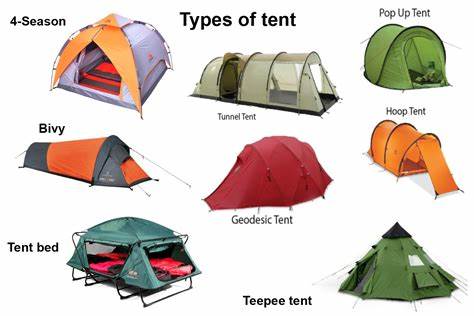
Tent material
Water-repellent is only coated with AC or PU on the surface, and is generally only used for children or game tents.
Waterproof 300MM is generally used for beach tents/shade tents.
Waterproof 800MM-1200MM is used for conventional simple camping tents.
Waterproof 1500MM-2000MM is used for relatively mid-range tents, which need to travel for many days.
Waterproof above 3000MM is generally a professional tent, which has been treated with high temperature/cold resistance technology.
Bottom material
Ordinary fabrics are the most common, and it is better to use high-end Oxford fabrics, and the waterproof treatment must be at least 1500MM.
Battalion pillar material
Fiberglass column
Although not as durable and lightweight as aluminum posts, fiberglass posts are an economical choice for drive campers and occasional campers.
aluminum column
It provides a very good strength-to-weight ratio, reduces weight to a minimum and maximizes strength, is durable and durable, and can withstand heavy snow and strong wind.
There are many types of tents according to the needs of use, such as camping, alpine, beach, fishing, hunting, disaster relief, jungle, military, etc. The following will mainly talk about the materials and design of camping tents.
Camping and mountaineering tents generally use light and thin polyester and nylon fabrics, which will be light to carry, and can increase the density of the fabric in the warp and weft directions. Foreign high-end tents use 210T to 300T, and the higher the density, the water resistance will be relatively improved. , but if the density is too high, the filaments are also required to be thin, so the strength will decrease.
There are many kinds of coatings for outdoor tents. Outdoor tents for camping and mountaineering generally use PU, PE and silver coating, and PU is the most ideal. The waterproof index of the outer tent is generally 800~2500mmH2O, too high will affect the air permeability of the tent, and foreign high-end tents are rarely above 2500mmH2O.
Moreover, the waterproof index of the tent is only a dynamic waterproof index, not a hydrostatic pressure index. 2500mmH2O is only the instantaneous water pressure when the rain falls. If you use 2500 water column, it will definitely leak.
The outer tents of most tents will be soaked in the rain for a long time. At this time, the design of the double-layer tent shows its advantages. The water droplets gathered inside the outer tents will slide to the ground. According to these characteristics, it is recommended not to choose single-layer tents for camping and mountaineering, because the water droplets of single-layer tents will slide down inside the tent.
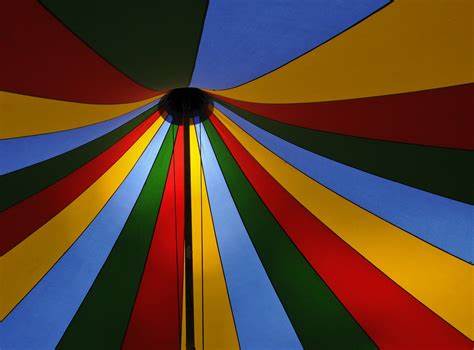
The inner tent is generally made of light and thin polyester, nylon, and polyester-cotton breathable fabrics
The advantage of polyester cotton is that it has good hygroscopicity, but the disadvantage is that it is easy to mold. The advantage of polyester and nylon is that it is easy to care for. Some inner tents are made of large-area mesh, which has the advantage of good ventilation, but the disadvantage is that the light is too transparent. In summer, only the inner tent is used, and the inside can be clearly seen from the outside, and it is easy to lose light when sleeping.
PE, ordinary nylon, Oxford cloth are used for ground materials
Low-end use PE bottom, PE is not wear-resistant, easy to age and become brittle. The tear-resistant nylon bottom is used in alpine tents, which has the advantage of being light, but the disadvantage is that it has poor wear resistance and is easy to be punctured. The Oxford cloth is the most mature. The Oxford cloth is rated by the thickness index D of the silk. 210D is thicker than 150D. It is relatively better in wear resistance, but the weight is relatively higher. The higher the waterproof index of the base material, the better, generally 2000~50000mmH2O.
Tent poles generally use glass fiber poles and aluminum poles
The advantage of fiberglass rods is that they are cheap, but the disadvantages are that they are easy to age, brittle, broken, and heavy. The advantages of aluminum poles are light weight and high strength, but the disadvantage is that they are expensive. The material of the aluminum pole is 7075T9 or 7001T6. In the early days, only South Korea, the United States and Germany could produce the aluminum pole.
A few years ago, domestic aluminum rods were imported from South Korea, and they came in as a complete set. Later, in order to save costs, domestic aluminum pipes were imported from South Korea, and they were cut and assembled by themselves, also known as Korean aluminum rods.
Recently, I heard that a former domestic military enterprise that made missile shells can also make aluminum tubes, but the raw materials are also from South Korea. EASTON7075 is printed on the real Korean original complete set of aluminum poles.
Many friends think that both the inner and outer tents of camping and mountaineering tents should be tight. In fact, the outer tents should be tight by the rubber ropes nailed to the ground, and the inner tents with tent poles should be looser. There is some room for expansion. You can take a look at the wind tunnel test of the tent.
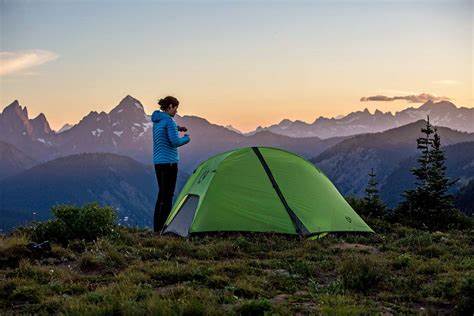
Precautions for using backpacking tents1. When setting up a tent, the outer tent must be straightened to avoid contact with the inner tent. The water droplets on the inside of the waterproof outer tent penetrate into the inner tent.
2. Do not expose the tent to the sun at high temperature, and do not place the base fabric on the high-temperature beach or ground, so as to prevent PU from aging and reduce waterproof performance.
3. When retracting the tent, roll it up slowly and in a directional way to drive away the air in the tent. If the air rolls up the tent without an outlet, the air can only break through the waterproof layer and come out, which will greatly affect the waterproof performance.
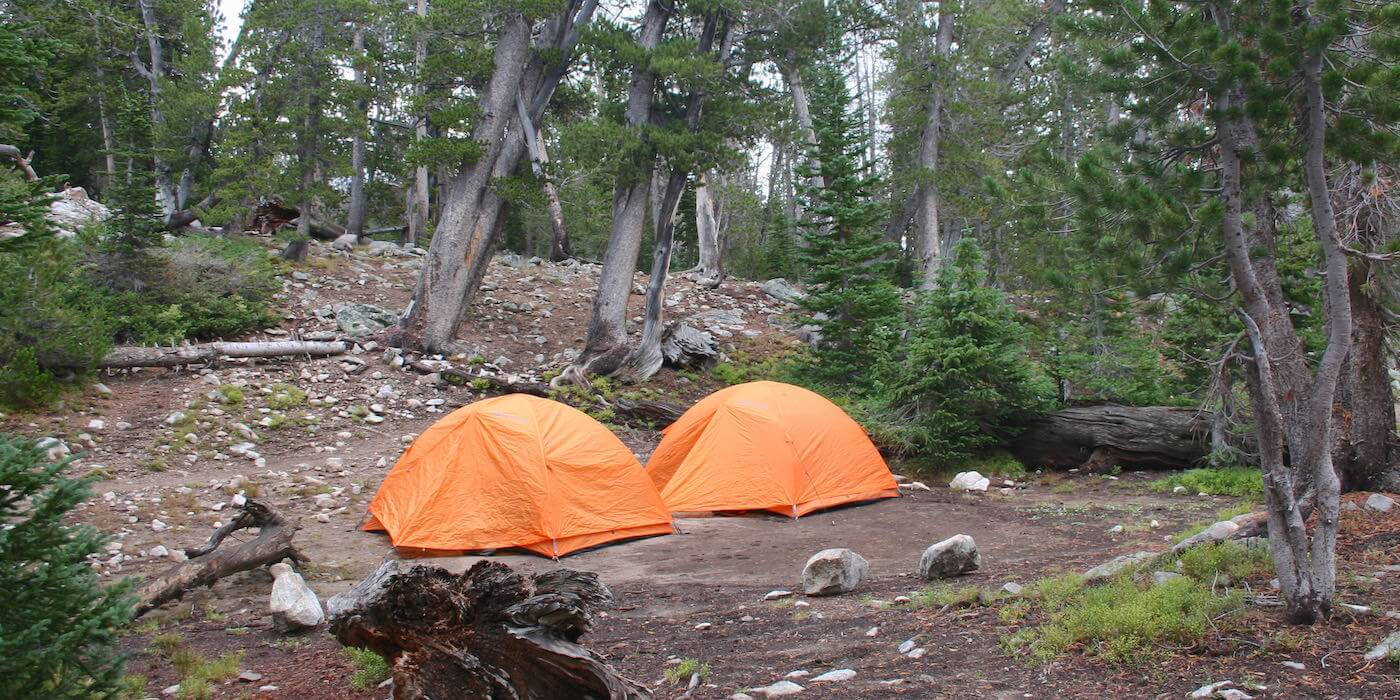
Tutorial on pitching a tent
1. Slope
This is a situation that is often encountered when climbing a mountain and taking an ascending route. Under normal circumstances, it is still possible to find a sloping flat ground on a slope (if you can’t find it, refer to the third and fourth articles). The key is that the sleeping bag and the moisture-proof pad have less friction when sleeping at night, and people will slide down. It is impossible to fall asleep on a steep slope.
adapting methods
a. When two people set up a tent, choose to camp under two trees that are close to each other. If you don’t move two big rocks below, put your backpack between the trees or rocks so that you can sleep with your head facing up at night. on, and fell asleep with the feet on the bottom of the backpack. In fact, this way people fall asleep half standing.
b. If it is better to solve it alone, when camping, the side of the tent is leaned against a tree or stone, and the backpack is placed in the middle of the tree or stone, so that the overall weight of the person is pressed on the side of the backpack, and the left and right sides can sleep alternately at night. Ensure better sleep effect.
2. The tent pole is not there
This possibility is that the tent and the tent pole are separated, sometimes they are not brought, sometimes the team members with the tent and the team with the tent pole are scattered, and most of the tent poles are broken and damaged. In this case, everyone To be clear, tent poles are actually poles that support several pieces of cloth.
If you are not camping in snowy mountains or windy weather, the strength requirements will not be very high, so it is easy to find alternatives in the wild. The best is bamboo, which has toughness and strength. If you can’t find it, use a knife to cut one. For wooden branches of similar length, the principle is to look for new branches instead of old branches, and for wet branches instead of dry branches. Such branches have greater toughness.
3. The area of the campsite is too small or there are too many rocks at the bottom to clean up
This situation is more complicated, and it should be used flexibly according to the geographical conditions at the time.
a. If the bottom is uneven, and there is no thick floor mat, it is easy to damage the bottom of the account. Generally, you can find dead grass or leaves to spread to the bottom to fill it up.
b. If the camping area is too small and cannot be cleaned, there is no way but to spread the tent and lay down somewhere to sleep. The key is not to suspend the bottom of the tent to avoid crushing the bottom fabric.
c. This situation is quite special. One time I camped on the top of a mountain. After looking around, I found a flat ground. There was a big rock protruding from the middle of the annoying place. When I dug it with a knife, roots took root underneath. I had no choice but to sleep. Obviously, if the tent is pressed directly on the stone, the suspended cloth will be easily torn.
The method is to tighten the tent pole as much as possible when supporting the tent, or even find a few stones to press the tent pole to make it bend more. The back cloth will not collapse very tightly on the stone below. Of course, if the curvature is too large and you are afraid of breaking the tent pole, you can use branches as above.

4. Rock crevices, caves, rocky hillocks
This is in an extremely bad situation, that is to say, there is no place to camp. Then I would like to ask, what are tents used for? The first is of course to prevent rain. If there is no rain, can we not camp.
Then there is the second point, which has a certain effect of keeping warm. If your sleeping bag can meet the temperature requirements, why do we have to camp and sleep like this. Of course, sometimes there are bugs to harass. It's not serious, just bear with it.
If the weather is also extremely bad, first wrap the moisture-proof pad and sleeping bag in the inner tent, of course, try to leave as much space as possible inside, and put clothes or some items on the top of the head, so that the cloth on the head can be supported for easy breathing, and then Put the outer tent on top, and a nest that is rainproof, warm, and insect-proof is built.
disassemble
1. To disassemble the tent, first remove the bracket of the tent and take it out. Fold the stand into the pocket.
2. Trim the folds of the tent as neatly as possible, with the bottom still facing down.
3. Turn the tent over and fold it neatly in half like a quilt. Generally, it needs to be folded in half twice.
4. Carefully and slowly squeeze the air out of the folded tent from end to end. Flatten the tent as much as possible.
5. Roll up the tent slowly, squeeze out the air during the rolling process, otherwise the tent will be too big.
6. Finally put the tent and some attached parts into the bag and the tent is ready.
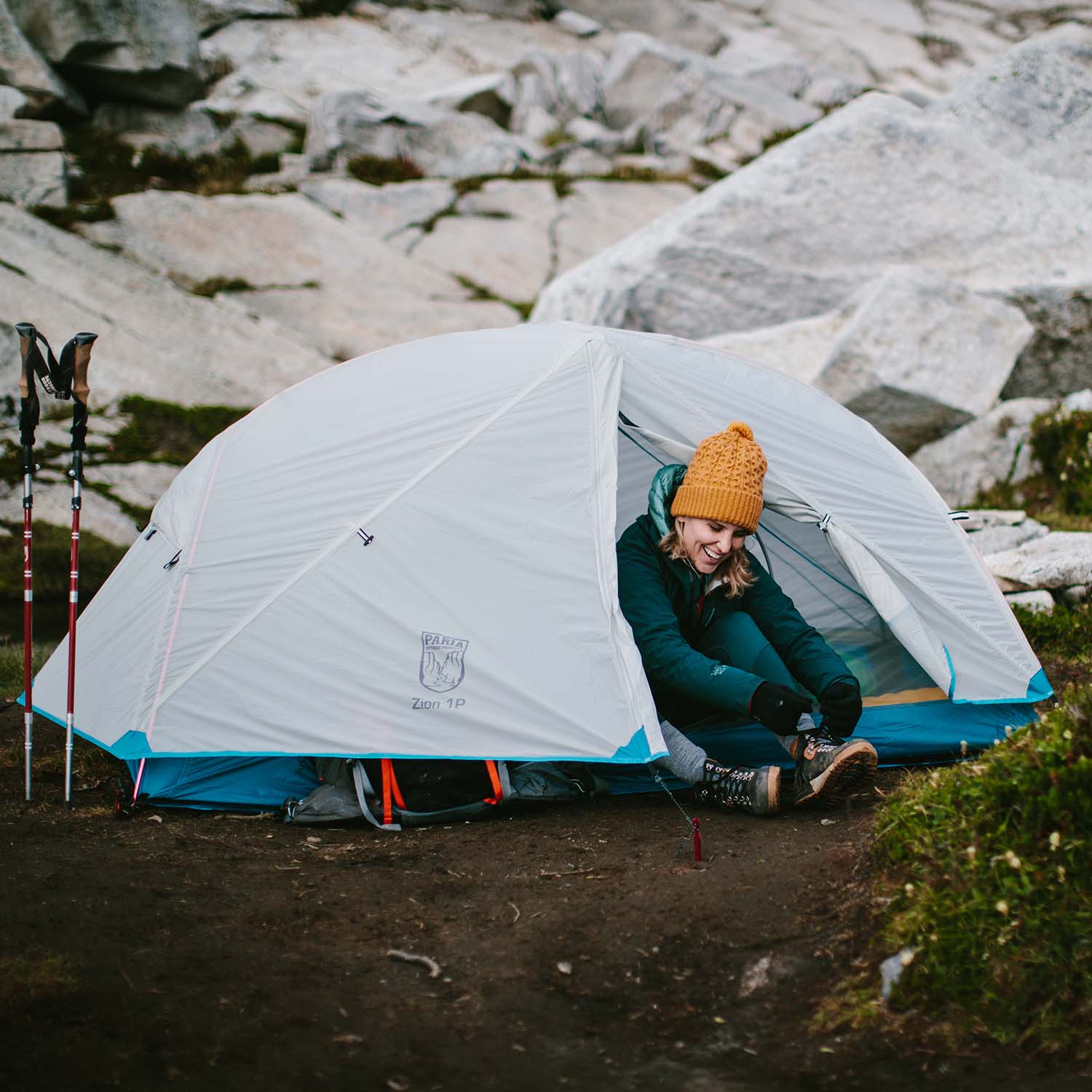 KASSICO
KASSICO, a leading
aluminum box factory in Ningbo, China, has 21 years of production experience. Since 2015, combining the advantages of
camping boxes, KASSICO has expanded its business scope to outdoor camping gear and equipment, including design and supply of
camp kitchenware,
camp furniture, camping tent,
camping lights and tools, etc. With multiple sets of outdoor products solutions, kassico provides customers around the world with hundreds of innovative and affordable outdoor products, we will be your reliable suppliers, and we will try our best to serve you better and to be your honest partner.
More Detail:
https://www.kassico-outdoor.com/







